💡 Why Shrimp Are Awesome
- Like tiny underwater ferrets — climbing, foraging, goofing around
- Fun colors, small size, tons of character
- Low bioload = easier than fish
- Low maintenance pets
- Way more fun than most beginner fish species
If only we could hold them..
🧠 The Big Misconception
"Shrimp are delicate."
Nah. Neocaridina especially are tough little roaches. People just overlook stuff like copper and chloramines, and then blame the shrimp.
Stability is key …..once you've picked your parameters, temp etc …..keep it stable! ❤️
🔥 The Shrimp-Killers (Ranked)
- Chloramines are in most tap water — always use a water conditioner (e.g., Seachem Prime)
- Copper is in fish meds, fertilizers, antibiotics, even some food
- Copper can leach from pumps — sponge filters with air pumps are safer
- Copper in tap water? Yes, especially from old pipes
- Pesticides on plants? Yes, those too — can linger for weeks
- Top-offs without water changes in open tanks = mineral (and copper) buildup
🧠 A copper test kit is more important for shrimp than almost any other.
Copper in trace amounts in shrimp food is usually okay, they do need copper but in very very small amounts — like in Hikari Shrimp Cuisine.
🐛 Pests & Hitchhikers
If you follow this guide, the risk of introducing pests or parasites is low—but it's never zero. These unwanted guests can sneak in on plants, shrimp, snails, fish, or even live foods. Some are harmless (or even beneficial), while others can harm your shrimp if left unchecked.
🚫 Dangerous Pests
The two biggest concerns in shrimp tanks are Planaria and Leeches. These are active predators and can harm or kill shrimp, especially smaller or molting ones.
- Planaria:Flatworms with an arrow-shaped head and two distinct black "eyes." Easy to identify and unmistakable. They will actively hunt shrimp.
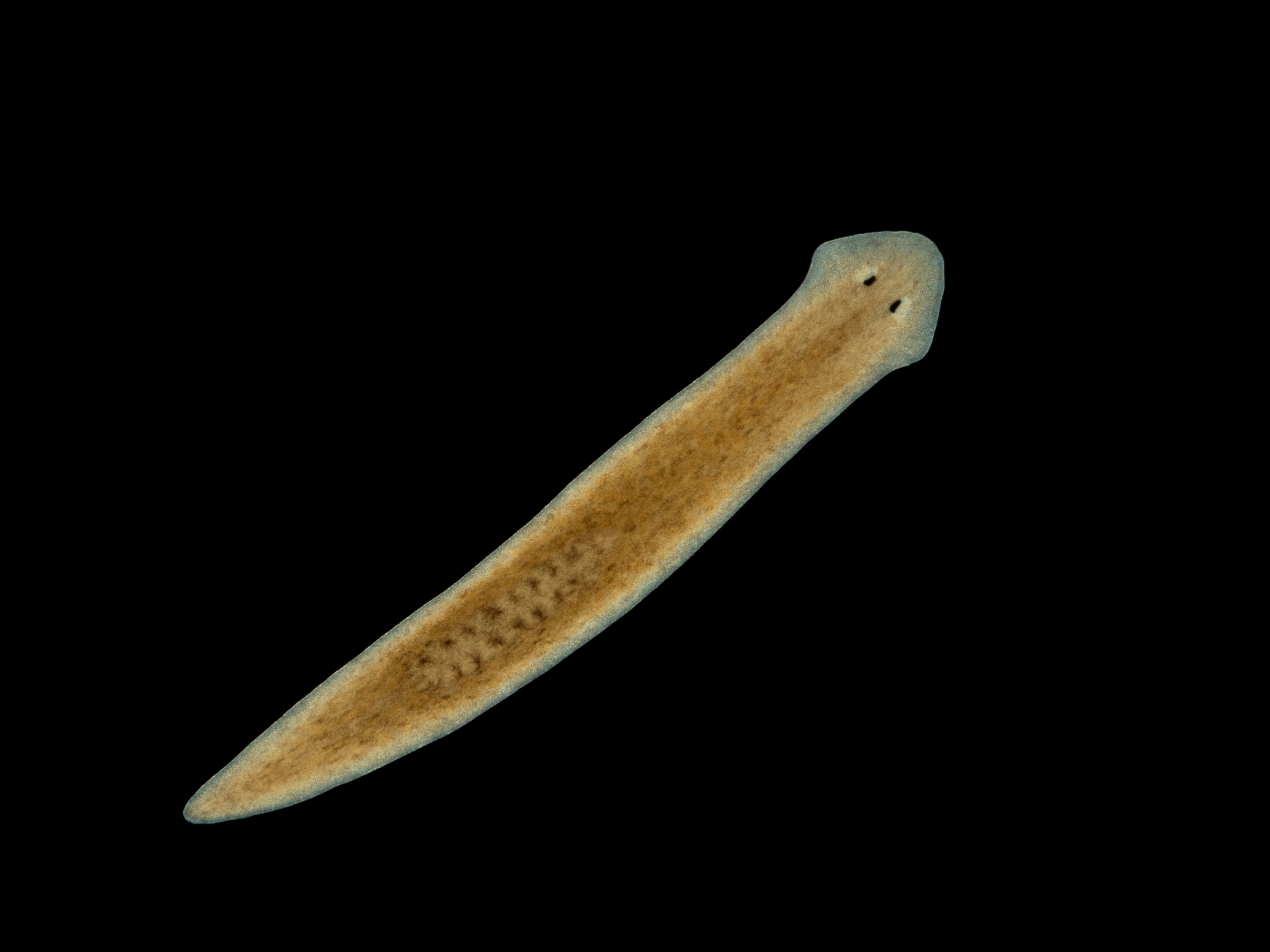
- Leeches: Often confused with harmless detritus worms. Look for a thicker or flatter body and their distinctive "inch-worm" or suction-crawl movement. They can also swim briefly in the water column.
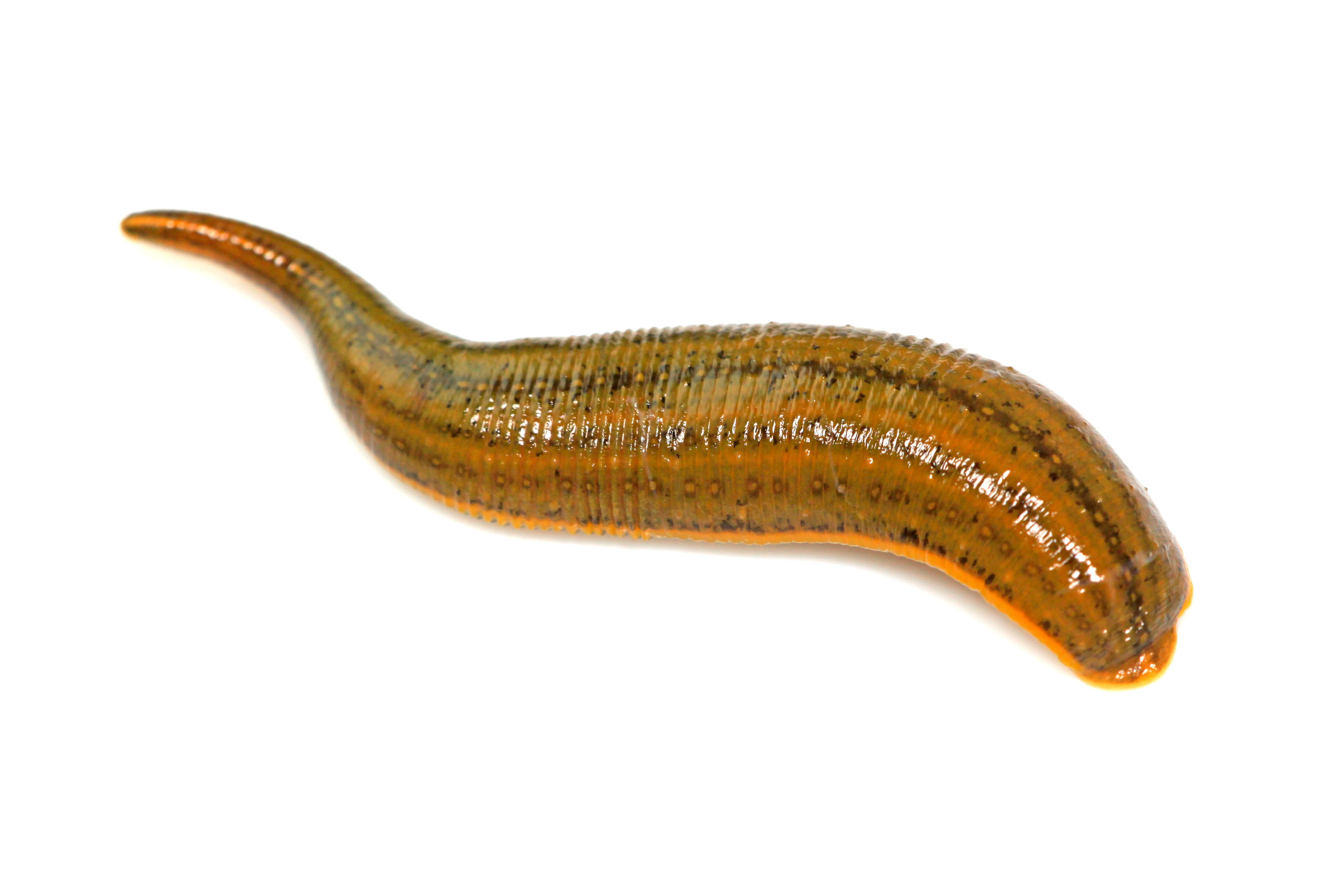
Don't mistake the Planaria for the Rhabdocoela worm, which is harmless and beneficial. Rhabdocoela worms are thin, white, and often found in the substrate or on plants. They do not have the distinctive arrow shape or eyes of Planaria.

The best treatment for both Planaria and Hydra is a shrimp-safe medication like No Planaria (made from Betel nut extract). But use extreme caution—even shrimp-safe treatments can be stressful or harmful to shrimp if overdosed. Always follow instructions precisely and dose conservatively.
⚠️ Other Nuisances
- Hydra: Tiny, anemone-like creatures with tentacles. They can sting and trap shrimplets. Often found in fast-flowing areas. While not always fatal, they reproduce quickly and can become a problem.
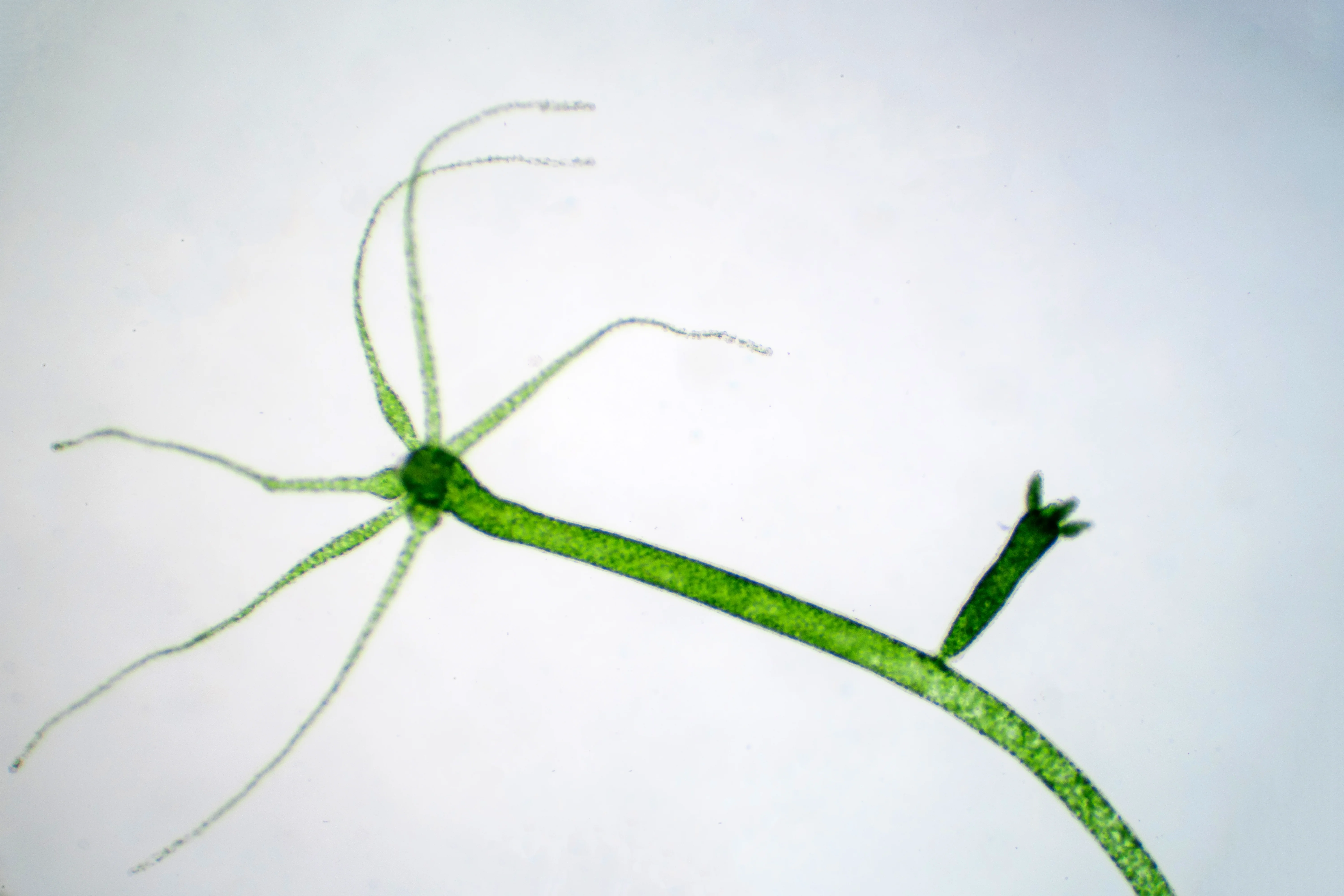
- Seed shrimp (ostracods), limpets, nuisance snails: Usually harmless but can compete with shrimp for food. Often a sign of overfeeding.
For nuisance snails, manual removal, traps, or feeding control is usually enough. Some aquarists use assassin snails, but they can also target baby shrimp, so use with caution.
✅ Harmless (and Helpful!) Microfauna
Some critters often mistaken for pests are actually signs of a healthy tank:
- Copepods – Tiny darting creatures that graze on biofilm and algae.
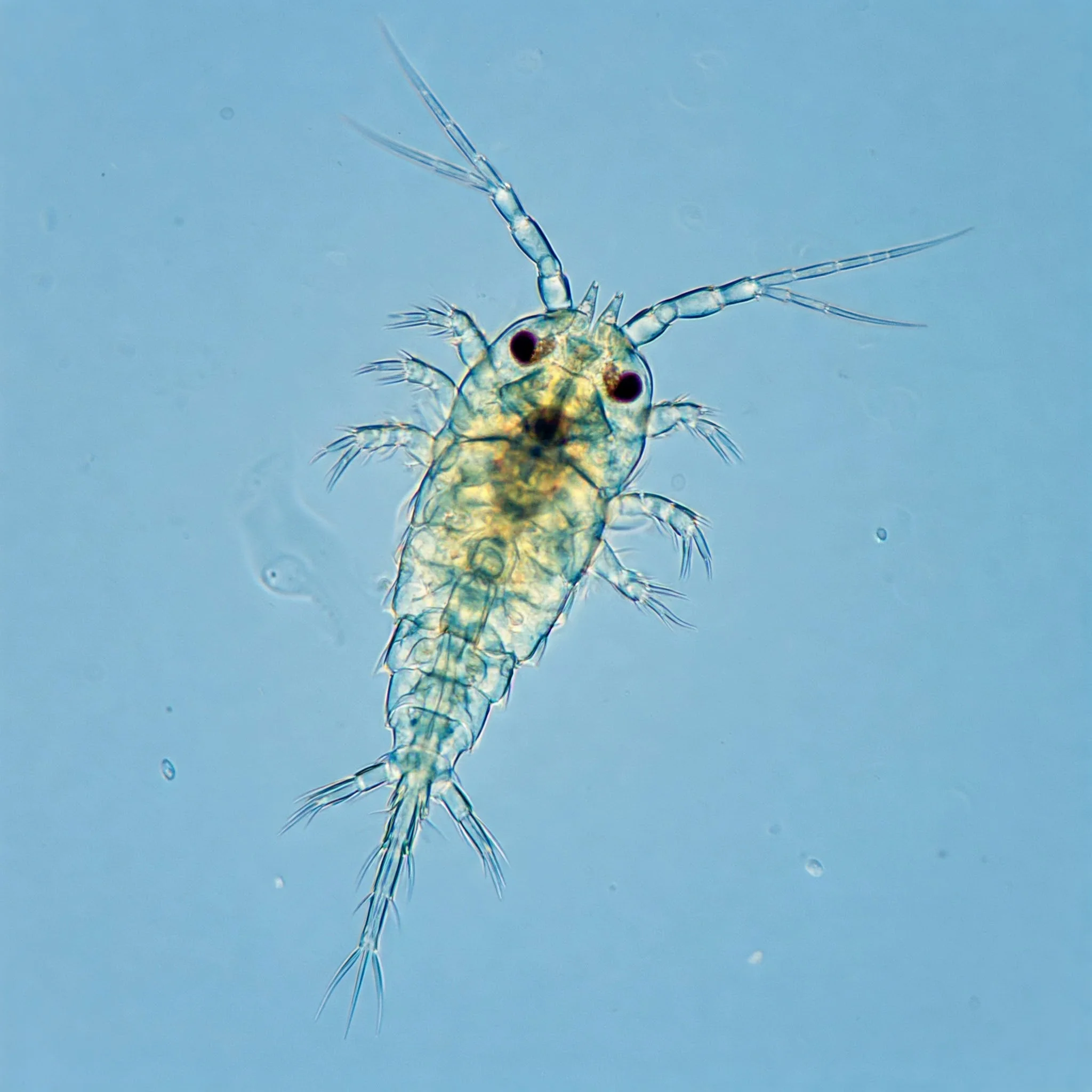
- Detritus worms – Thin, wiggly worms in the substrate. Totally harmless.
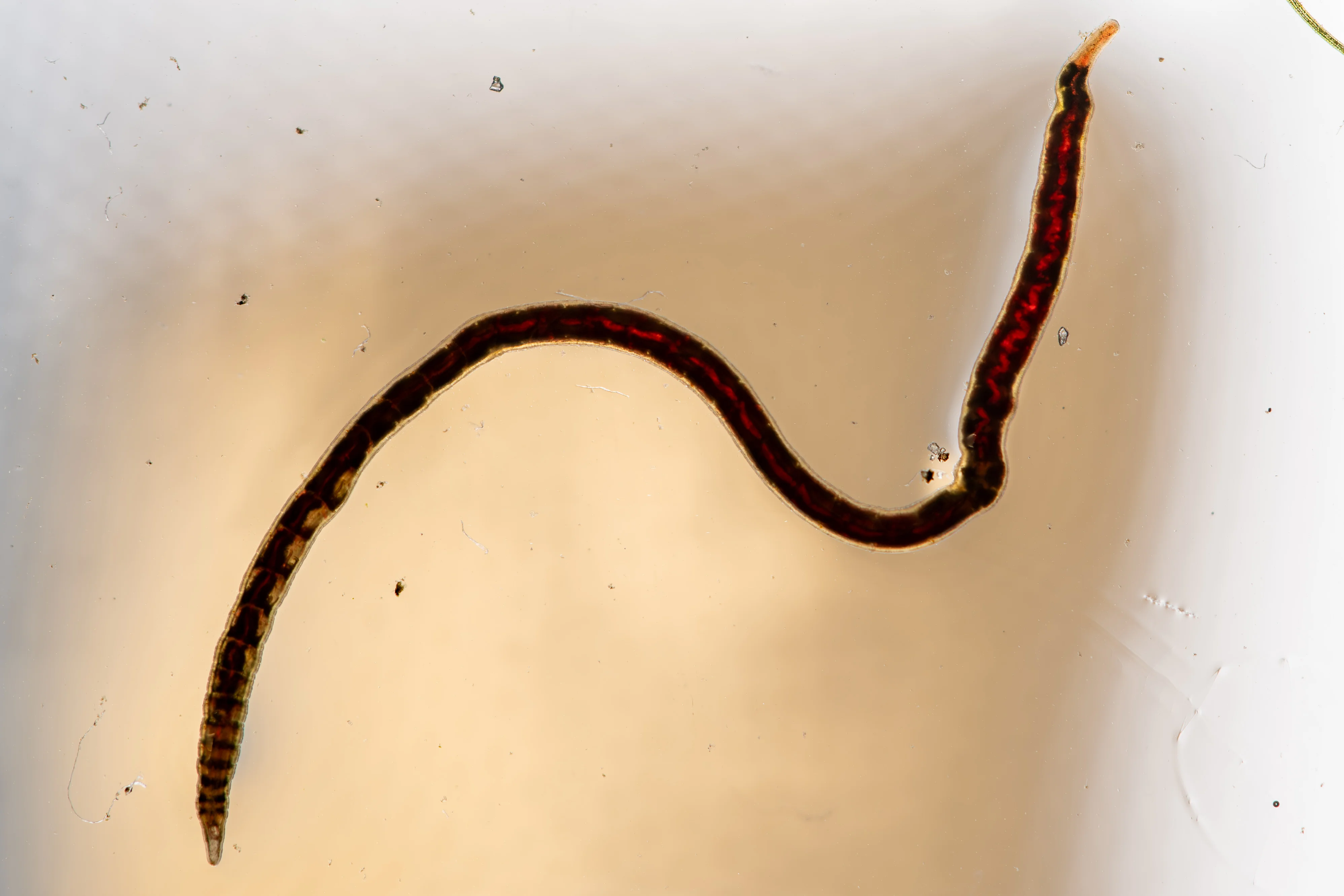
- Infusoria – A catch-all term for microscopic life that shrimp (especially babies) feed on.
Seeing any of these is a great sign—your tank is biologically balanced and thriving!
🧼 Tank Hygiene & Maintenance
Maintaining good hygiene is one of the most important parts of shrimp keeping. Even one small mistake can lead to a mass die-off.
🖐️ Before You Begin
Always wash your hands thoroughly with plain, unscented soap and rinse very well. Avoid using lotions, sanitizers, or any other chemicals before putting your hands in the tank.
✨ Cleaning the Glass
When cleaning your aquarium glass, make sure to spray any cleaning solution away from the tank—onto a cloth or paper towel first. This prevents chemicals from entering your water.
It's best to use a glass scraper instead of a magnetic cleaner. Over time, magnetic cleaners can corrode or leak rust into your tank—damage that’s often invisible until it’s too late.
If you have an acrylic tank, avoid metal blades altogether and opt for soft sponge scrapers to prevent scratching.
🧹 Tools & Best Practices
- Use a siphon with a squeeze bulb to gently clean substrate without disturbing too much beneficial bacteria.
- A turkey blaster is great for spot-cleaning or reaching debris in hard-to-access corners.
- Keep a pair of aquarium scissors and tweezers handy for trimming plants or removing detritus and leftovers.
- When removing plants or decor, always use a white or clear bowl to spot any shrimplets that might hitch a ride.
Good tank hygiene goes a long way in shrimp keeping. I always use a simple siphon with a squeeze bulb to clean the substrate gently without disturbing too much beneficial bacteria. A turkey baster is great for spot cleaning and removing debris from hard-to-reach corners. For trimming plants or removing leftover bits, long scissors and tweezers are essential tools in my kit. I also recommend using a white or clear bowl or bucket when moving anything — it makes it easier to spot and save any baby shrimp that might hitch a ride. Keeping detritus under control helps maintain stable water parameters and reduces the risk of harmful build-up over time.
🧪 Test Kits — want for Neos, need for Caridina
It's common to test the water regularly.
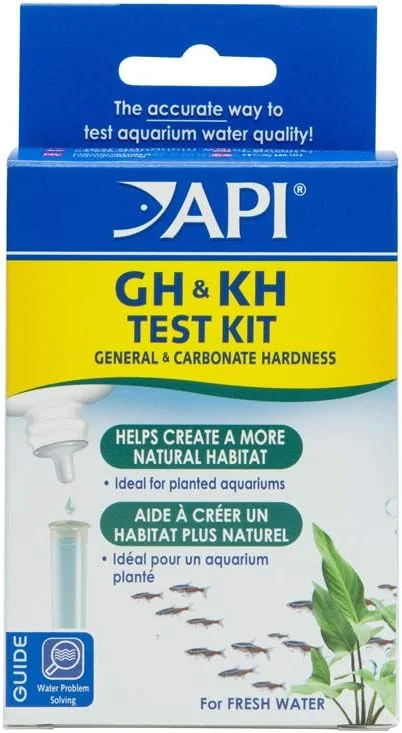
Recommended:
- Ammonia (especially during setup)
- Copper (always)
- Chloramines (once to see if you need to treat tap water)
- KH / GH (during initial setup, and when adjusting, then monthly)
- Nitrite & Nitrate (helpful for spotting cycle or overfeeding issues)
In mature, planted tanks, major ammonia spikes are rare unless you're overfeeding or have a die-off.
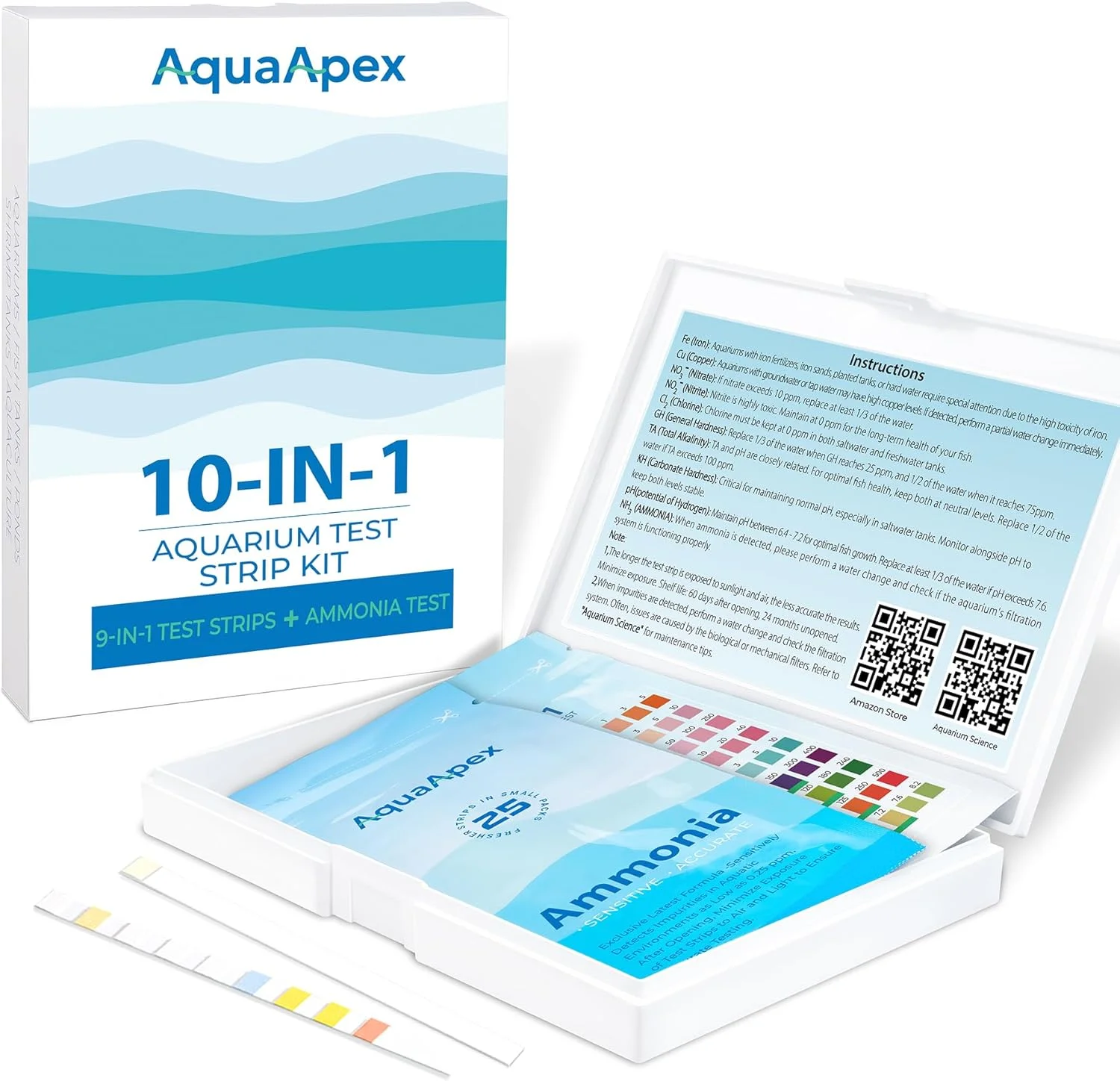
A lot of people will tell you that you shouldn't have test strips. Test strips are okay for most scenarios. Especially when you're on a budget. Don't feel bad for buying test strips but be sure to follow the instructions on the package.
A lot of test strips don't include ammonia. Try to find a kit that does have ammonia especially if you're just starting out.
I rather you buy test strips and test regularly to eliminate problems early on then spend more money on individual testing kits and test less.
Author's note:
In my opinion, everything but GH and KH can be tested with strips. Those are the only two where accuracy matters. For the rest—like Ammonia, Nitrite, Chloramines or even Copper—presence alone means you already have an issue, so you don’t need lab-level precision, just confirmation.
💧 Do You Even Need Water Changes?
🚫 Not if:
- You have lots of plants, wood and moss
- You're not messing with the tank often
🧠 For open-top tanks, minerals concentrate over time when you refill evaporated water → occasional water changes are smart.
Closed-top tanks? You might not need them at all. Disturb less, shrimp thrive more.
🔧 Easy Mode: Neocaridina Setup
What You Need:
- 10-gallon+ tank (5 works, but 10+ is ideal)
- Sponge filter + air pump
- Driftwood — Ironwood and Mopane
- Floating plants (like frogbit, Salvinia)
- Moss (Java, Christmas, etc.)
Woods like Cholla and Dragonwood are often marketed for shrimp tanks because they grow biofilm. While that’s true, they’re also highly porous, meaning they can trap debris and create low-oxygen (anaerobic) pockets inside.
In these pockets, harmful bacteria can grow and produce hydrogen sulfide gas—a substance that is extremely toxic to shrimp even in small amounts. This kind of issue can quietly build up and cause sudden unexplained deaths, especially in newer tanks.
For that reason, this guide recommends avoiding porous woods altogether—especially if you're a beginner or setting up a new tank. They introduce a risk factor that can easily be overlooked and lead to failure, even when everything else seems right.
If you’re experienced and still want to use them, be sure to research how to properly prepare and maintain them. You’ll need to:
- Pre-treat them (boil, soak, and clean thoroughly)
- Inspect them regularly and replace them every few months
- Ensure your tank has strong filtration and regular maintenance
But again, if you’re just starting out, it’s far safer to leave these types of wood out of your setup—for now. There are plenty of other shrimp-safe decorations that don’t carry the same risk.
Optional:
- No heater needed if room stays above 20°C
- No fancy light needed — ambient room light works
Parameters:
- KH: 4–6 (can go as high as 8)
- GH: 6–8
- pH: 6.5–8.0
- Strontium, manganese, iron, and barium can contribute to GH, and while shrimp don’t really benefit from them, they’re usually not harmful in trace amounts.
- Zinc and copper, however, are more dangerous — shrimp are extremely sensitive to them, and even small excesses can build up over time and lead to stress, failed molts, or death.
🧠 Don't min-max. Stable > perfect.
💡 Pro Tip: The secret to successful shrimp keeping isn't perfect parameters—it's consistency. A stable tank at "okay" parameters will always outperform a tank with "perfect" parameters that fluctuate.
🔬 Caridina Setup — Precision Mode
I like to think of Caridina shrimp as the koi carp of the shrimp world. Sure, there are gorgeous discus, bettas, and other fancy fish—but Caridinas share many traits with koi.
They get graded based on their patterns, come in a wide range of markings, and even have lines with a metallic sheen. If you're curious and want to dig a little deeper, check out this excellent guide to grading Crystal Red Shrimp over at The Shrimp Farm—it’s a solid primer.
And that’s only the beginning—there are now 100+ known mutations and strains, with fresh and exciting new variations showing up every year!
Caridina are pickier and costlier. Here's how to set them up for success.
What You Need:
- RO, DI, or distilled water
- GH+ salts (no KH in mix)
- Buffering substrate (e.g., Fluval Stratum, ADA Amazonia)
- Sponge filter
- Moss, floaters, driftwood (Ironwood and Mopane)
Woods like Cholla and Dragonwood are often marketed for shrimp tanks because they grow biofilm. While that’s true, they’re also highly porous, meaning they can trap debris and create low-oxygen (anaerobic) pockets inside.
In these pockets, harmful bacteria can grow and produce hydrogen sulfide gas—a substance that is extremely toxic to shrimp even in small amounts. This kind of issue can quietly build up and cause sudden unexplained deaths, especially in newer tanks.
For that reason, this guide recommends avoiding porous woods altogether—especially if you're a beginner or setting up a new tank. They introduce a risk factor that can easily be overlooked and lead to failure, even when everything else seems right.
If you’re experienced and still want to use them, be sure to research how to properly prepare and maintain them. You’ll need to:
- Pre-treat them (boil, soak, and clean thoroughly)
- Inspect them regularly and replace them every few months
- Ensure your tank has strong filtration and regular maintenance
Optional:
- No heater needed if room stays above 20°C
- No fancy light needed — ambient room light works
Parameters:
- KH: 0 (you can go up to 2 but 0 is preferred)
- GH: 4–6
- pH: 5.8–6.4
- Temp: 20–24°C
- TDS: 100–150 (Optional — nice for dialing in, but not essential if you're attentive)
A KH of 0 is easier for us to manage because it reduces the load on the buffering substrate, helping it last longer and stay effective at stabilizing pH. It has nothing to do with the shrimp themselves—they can do fine with a KH of 2 or even a bit higher. But keeping KH at 0 just makes things simpler and more stable for us, which is why most breeders aim for it. If you can keep your PH stable with 2KH and want to keep it that way for some reason, by all means do it.
🧠 Buffering substrate wears out in 1–2 years. If pH starts rising or KH returns, it's time to swap it out.
🧪 Acclimatisation
Acclimating shrimp properly is one of the most important steps when introducing them to a new tank. Shrimp are highly sensitive to changes in water parameters — especially TDS, GH, KH, and pH — so taking your time here can make the difference between thriving shrimp or a silent crash within 24 hours.
If you're like me and prefer more control, the pipette method works beautifully — especially for smaller batches of shrimp.
What you need:- A 3 ml pipette or syringe
- A clean container (never acclimate in the transport bag if you can avoid it)
- Timer or phone alarm
- A test kit for ammonia, nitrite, nitrate
- Float the shrimp bag in your tank for 15–20 minutes to match temperature.
- Open the bag and pour the shrimp and their water into a small container or cup (something shallow works best).
-
Test the water in both the bag and the tank for ammonia, nitrite, and nitrate.
- If values are high in the bag (especially ammonia or nitrite), acclimate a little faster — around 9–12 ml every 5 minutes.
- If values are low, go slower — 6 ml every 5 minutes.
- Check for large differences in pH, KH, GH, or TDS. If there’s a big gap, go slower regardless of toxin levels.
-
Repeat until the total volume in the container has at least tripled. Approximate durations:
- Neocaridina: ~45–60 minutes
- Caridina: ~90–120 minutes (longer if parameters are very different)
- Expensive shrimp? Take your time — slow is safer unless toxins are high.
- Gently net the shrimp into the tank. Never pour the acclimation water into your aquarium.
This is a more hands-off approach using airline tubing and a slow siphon from your tank into a container holding your shrimp.
- Start at around 1–2 drops per second.
- If toxins are present (like ammonia or nitrite), increase the drip rate slightly.
- Slow it down if pH, GH, KH, or TDS differ significantly between the bag and your tank.
Let it run for 45–120 minutes depending on species and conditions.
📝 Tips
- Always test the water the shrimp came in and your tank water before deciding the pace.
- Acclimate in low light to reduce stress.
- If a shrimp curls or flips, it usually means the transition is happening too quickly.
- Acclimation is about balance: go faster for high toxins, go slower for large parameter shifts.
🧬 Life Cycle & Sex Differences
Shrimp aren’t technically livebearers, but the way they care for their eggs makes them feel pretty close. After mating, the female carries her eggs under her swimmerets—those tiny fins under her tail—until they hatch into fully formed miniature shrimp, called shrimplets.
Shrimp don’t go through a larval stage like fish or frogs. Instead, they’re born as tiny, transparent versions of the adults. You usually won’t see them right away—they tend to hide, and only once they’ve grown a little will you spot them darting around the tank.
⏳ Growth Timeline
- ~3 months: Shrimp generally reach breeding age.
- ~4–5 months: You can start telling males from females more easily.
- ~6 months: Most shrimp reach their full coloration.
🔍 How to Tell Males from Females
Telling shrimp apart gets easier as they age. Here's what to look for:
- Males are usually smaller and more slender, often with a slightly curved back.
- Females tend to be larger, with a wider tail and straighter back—especially noticeable when they’re berried (carrying eggs).
- In Neocaridina and transparent Caridina shrimp, you can often see a yellow or greenish saddle (the ovaries) behind their head before they become berried.
🌱 Plants for Shrimp Tanks
Use in vitro plants (no pesticides) unless you're sure the plants come from a shrimp keeper or a no pesticide place.
Otherwise if you insist on getting them from a local fish store quarantine the plants for 4-6 weeks.
Treated plants can leach toxins for weeks or months
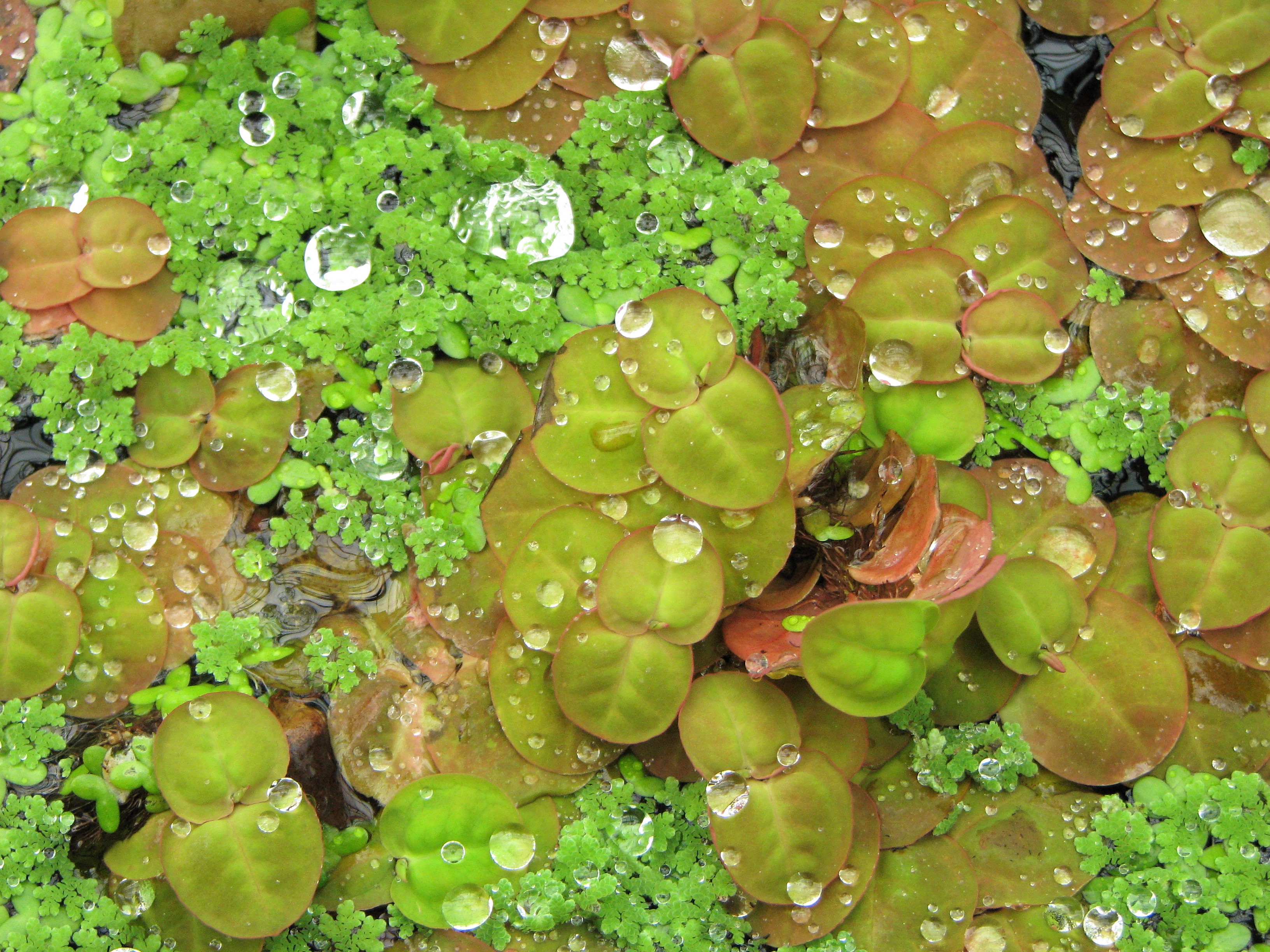
Floaters are excellent for soaking up nitrates and reducing light levels at the bottom of the tank—perfect for shrimp. They even help slow down water evaporation in open-top setups.
Just make sure there’s still some surface movement for gas exchange. Every now and then, remove a few floaters to keep the water flowing.
To stop floaters from taking over the whole surface, use feeding rings. You can make your own from air tubing or buy them premade. They keep floaters in one area and leave room for feeding.
Easy options include Salvinia and Duckweed—both grow fast with minimal care. Want something unique? Try Red Root Floater. It’s striking, has red roots, and can even bloom tiny flowers!
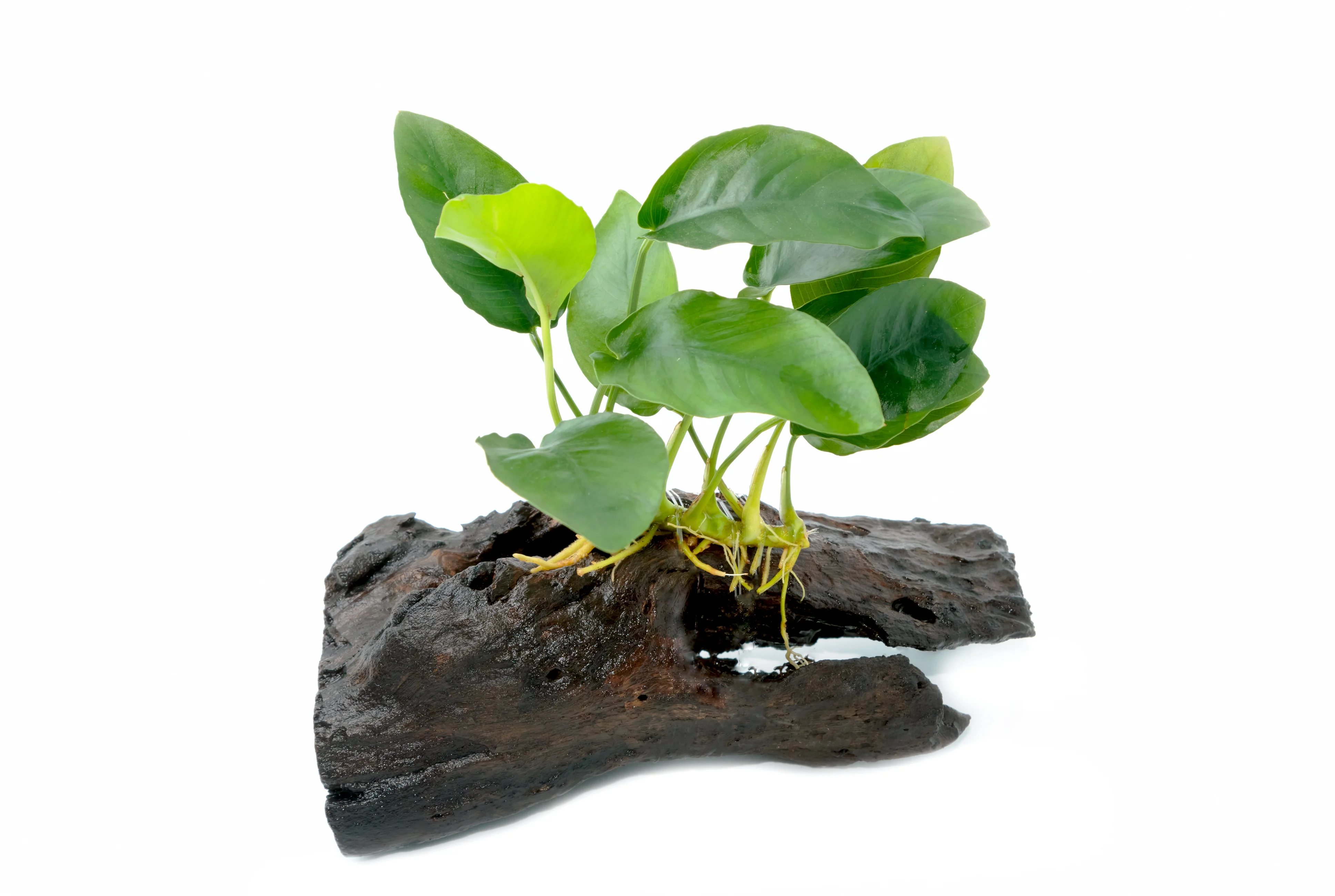
I highly recommend using epiphytes—plants that grow on wood or rocks and don’t need substrate. The big advantage is that with fuller, rooted plants, your shrimp tend to hide more. Epiphytes let you enjoy your shrimp without sacrificing plant cover.
Most epiphytes are easy to care for and don’t need much light, making them ideal for low-tech tanks.
Some great epiphyte choices for shrimp tanks include:
- Anubias – Hardy, slow-growing, and available in many sizes.
- Bucephalandra – Compact and colorful, great for smaller tanks.
- Java Fern – Classic and super forgiving, perfect for beginners.
- Bolbitis (African Water Fern) – A bit more flow-loving, but looks great on wood.
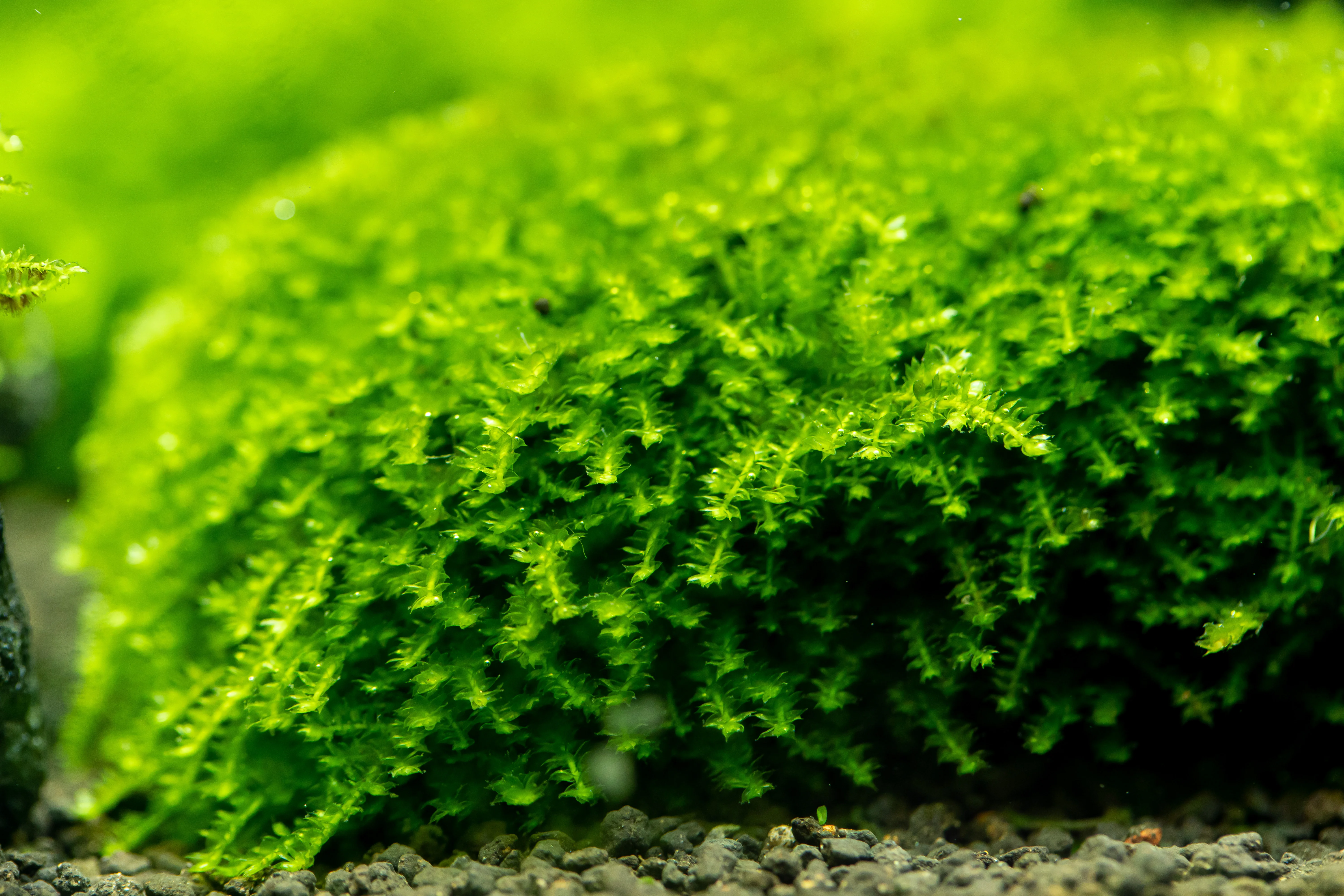
Moss is king when it comes to shrimp tanks. It provides tons of surface area for biofilm and microorganisms—exactly what baby and adult shrimp love to graze on. It also offers excellent cover for hiding and molting, which helps reduce stress.
The type of moss doesn’t matter too much—most work great. Java Moss is the easiest to grow and very forgiving. Christmas Moss and Taiwan Moss are also solid choices and have a slightly different growth style if you’re after a specific look.
Subwassertang and Hornwort are also great options. They don’t need to be planted and will float freely. You can gently anchor them if you want, but it’s not required.
🪴 Substrate & Decor
The substrate and decor you choose can have a real impact on your shrimp — not just aesthetically, but chemically too. It’s important to understand whether your substrate is inert or active, especially when deciding whether you’re going for Neocaridina or Caridina.
Neocaridina shrimp (like Cherry shrimp) do best with inert substrates such as sand, gravel, or baked clay. These won’t alter water parameters, which is ideal since Neos prefer harder, stable water.
Caridina shrimp (like Crystal Reds or Taiwan Bees) usually require active substrates that buffer pH and lower GH/KH — things like ADA Amazonia, Brightwell, Fluval Stratum, or SL-Aqua. These help create the soft, slightly acidic water conditions Caridinas need to thrive. I personally use Fluval Stratum and it’s worked really well for me.
🎨 On Plastic Decor
Yes, you can absolutely use safe plastic decor in your shrimp tank. I really can’t stress the safe part enough — make sure it’s aquarium-safe, doesn’t leach dyes, and doesn’t have sharp or rough edges that could harm shrimp. If it smells like chemicals or feels questionable, skip it.
I know plastic decor isn’t everyone’s cup of tea — and yeah, there’s definitely some gatekeeping in the hobby about it being “ugly” or “unnatural” — but seriously, don’t let anyone shame you for what you like. If a tiny pirate ship or neon cave makes you smile, add it. Your tank, your choice.
🌿 Go Organic (Seriously)
That said, shrimp don’t just do fine with organic elements — they absolutely thrive in fully organic setups. Mosses, botanicals, wood, stones, and live plants are key. These provide biofilm for food, surfaces for beneficial bacteria, and essential shelter for baby shrimp.
If you do use plastic decor, make sure it’s paired with plenty of organics. Don’t be tempted to scrub everything clean — that "gunk" is doing more good than harm. Shrimp do best when things look a bit messy. That’s nature at work.
🍽️ Feeding Shrimp
Shrimp eat biofilm all day. Overfeeding is the #1 cause of tank crashes.
Feed:
- 2–3x per week
- Some vegetable snacks
- High-quality shrimp pellets or specialty food
I usually go by 1/4th of the top of your pinky per 10-20 shrimp when feeding shrimp pellets or specialty food.
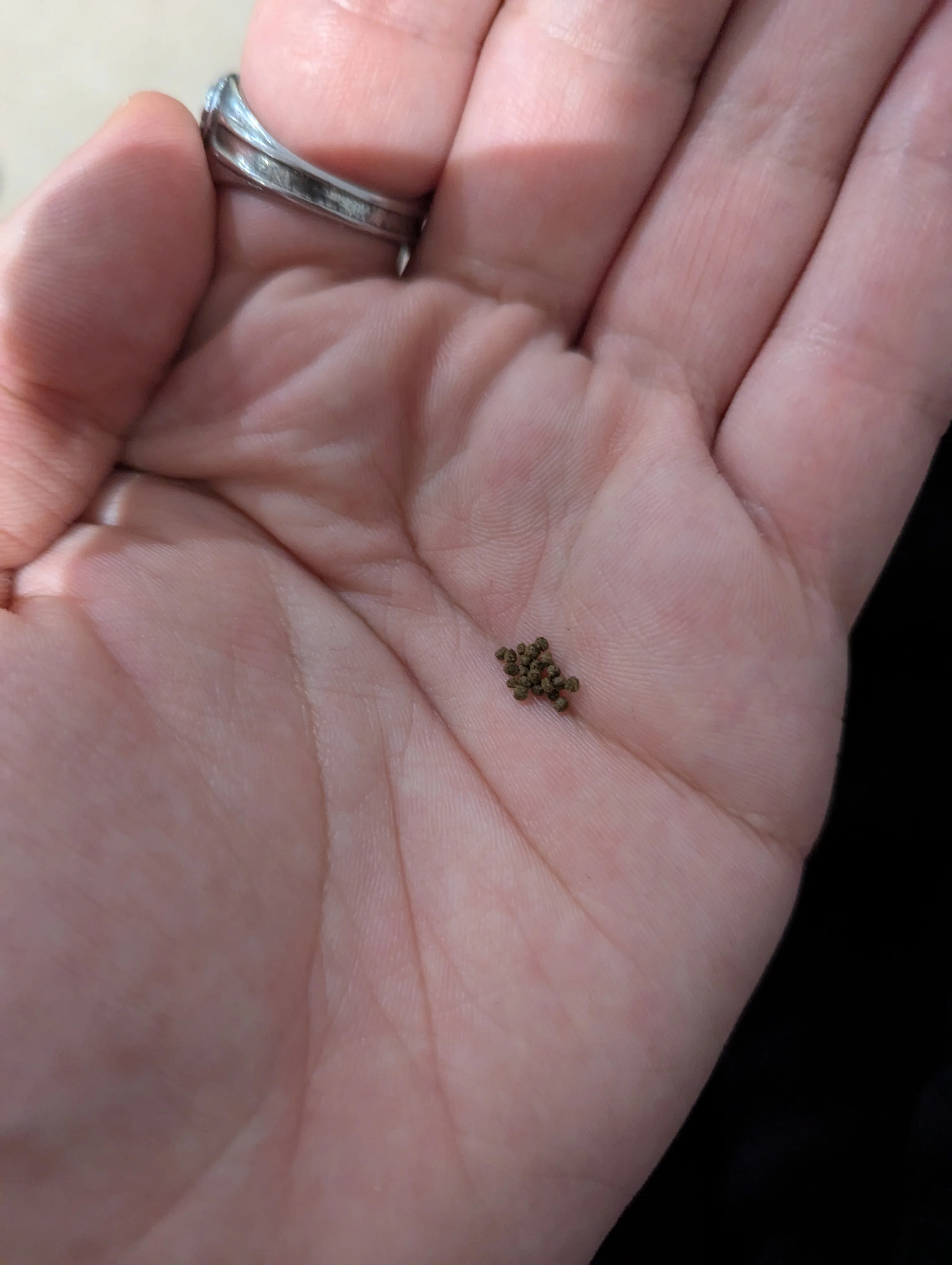
Fresh Foods (Blanched):
- Spinach
- Nettle Leaves
I usually twirl it in some boiled water straight from the kettle till it sinks.
Cucumber and zucchini are often used as shrimp snacks, but they come with serious downsides—especially for beginners. These vegetables are soft, high in water content, and rich in natural sugars. Once added to your tank, they begin to break down rapidly.
As they decompose, they can quickly foul the water, leading to cloudiness, ammonia spikes, and unstable parameters. The sugars they release also fuel the growth of undesirable bacteria, which can throw off your tank’s microbial balance and can potentially harm your shrimp.
Because of how fast these veggies decay, any uneaten portions should be removed within 4 hours. Leaving them in longer increases the risk of water quality issues, especially in new or lightly stocked tanks.
Botanicals
Botanicals are another solid addition to a shrimp tank. One of the most popular is the Indian Almond Leaf. It's great for shrimp—offering a natural food source, plus antibacterial and antifungal benefits.
That said, they're not exactly pretty (to some). But if you've got a paper punch and a bit of time, you can turn them into small, clean leaf shapes that actually look good in the scape.

Some botanicals can leave a lot of tanins in the water, which to me looks amazing but too much can make your water tea coloured — you will have to add a lot though. However tanins are great for the water and have mild anti bacterial and anti fungal properties.Botanicals are a fantastic way to enrich your shrimp tank — not just as a food source, but also for promoting biofilm and supporting natural behaviors. I like to collect alder cones, magnolia leaves, beech nut husks, and nettles from clean, unpolluted areas away from roads and farmland. Dried and stored properly, these make excellent additions to your tank and can even serve as a reliable food source when you're away. It's a simple, natural way to support your shrimp's health and keep things interesting.
🍽️ Community Shrimp Food Recipes
Want to make your own nutritious shrimp food? Our community has shared some amazing homemade recipes that your shrimp will love!
Possible Tank Mates
Although I don't really recommend adding fish to a shrimp tank, it causes them to hide more often and you don't really get to experience their full behaviours. It's not impossible.
The only thing you'll have to keep in mind, and no matter what the internet says, every fish will eat baby shrimp given the opportunity.
In a community tank, that should be completely okay — it provides some free live food for your fish, and if you have a bigger colony, some baby shrimp will still survive.
Just keep that in mind when you're mixing fish and shrimp.
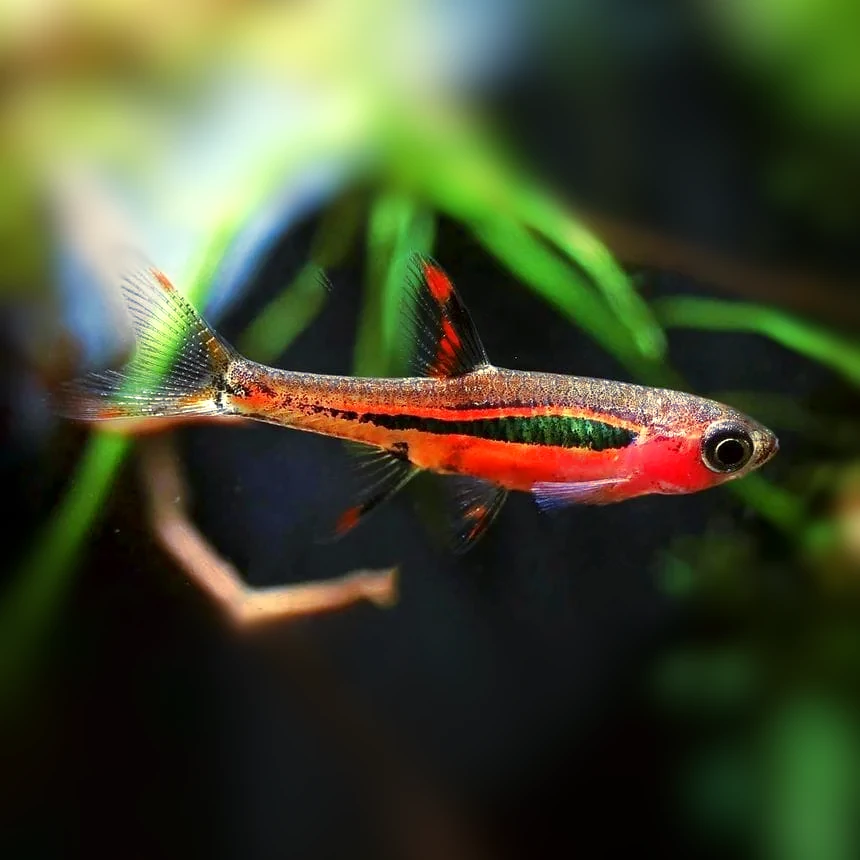
- Least Killifish (Heterandria formosa) – ~1.5–2 cm
- Ember Tetra (Hyphessobrycon amandae) – ~2 cm
- Neon Tetra (Paracheirodon innesi) – ~2–2.5 cm
- Green Neon Tetra (Paracheirodon simulans) – ~2 cm
- Chili Rasbora (Boraras brigittae) – ~1.5–2 cm
- Strawberry Rasbora (Boraras naevus) – ~1.5 cm
- Dwarf Rasbora (Boraras maculatus) – ~1.5 cm
- Least Rasbora (Boraras urophthalmoides) – ~1.5 cm
- Otocinclus Catfish (Otocinclus spp.) – ~2–3 cm
- Pygmy Corydoras (Corydoras pygmaeus) – ~2–2.5 cm
- Salt and Pepper Corydoras (Corydoras habrosus) – ~2.5 cm
- Dwarf Corydoras (Corydoras hastatus) – ~2.5 cm
- Chili Rasbora (Boraras brigittae) – ~1.5–2 cm
- Phoenix Rasbora (Boraras merah) – ~1.5–2 cm
- Strawberry Rasbora (Boraras naevus) – ~1.5 cm
- Dwarf Rasbora (Boraras maculatus) – ~1.5 cm
- Least Rasbora (Boraras urophthalmoides) – ~1.5 cm
- Green Neon Tetra (Paracheirodon simulans) – ~2 cm
- Pygmy Corydoras (Corydoras pygmaeus) – ~2–2.5 cm
- Salt and Pepper Corydoras (Corydoras habrosus) – ~2.5 cm
- Dwarf Corydoras (Corydoras hastatus) – ~2.5 cm
Snail Tank Mates
Snails can be excellent companions for shrimp tanks. They help with algae control, eat leftover food, and add diversity. Just like fish, compatibility depends on water parameters.
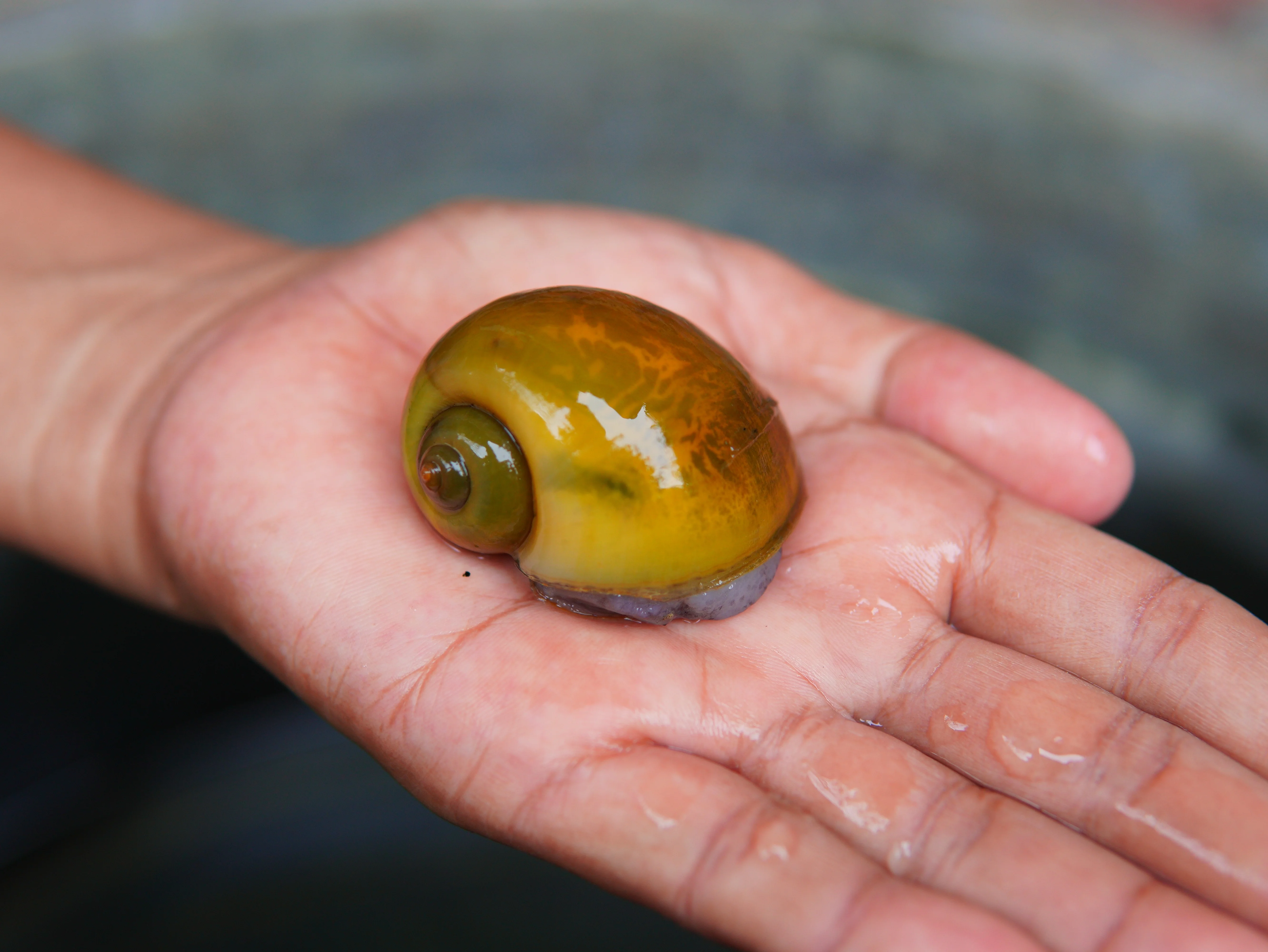
- Mystery Snail (Pomacea bridgesii)
- Coloured Ramshorn Snail
- Nerite Snail
- Spixi Snail (Asolene spixi) – Peaceful, slower breeder, soft water tolerant
- Coloured Ramshorn Snail – Can adapt to soft water; watch for shell thinning
🐜 What About Pest Snails?
Bladder snails and Malaysian Trumpet snails often hitchhike on plants. While not harmful, they can overpopulate. Controlled feeding and manual removal help. Some hobbyists even keep a few for cleanup duty.
🧘 Closing Thoughts
Shrimp are the chillest, most rewarding aquarium pets when set up right, they have quickly become my favourite animal not just pet.
Neos are low-effort once established — don't overthink it.
Caridinas are worth the extra steps, just go slow.
Watch shrimp in a species-only tank you'll see way more of their personalities and they come out more.
Focus on copper and chloramine above all — if those are handled, everything else is easier
The more stable and undisturbed the tank, the better they thrive
Special thanks to:- My wife and kids for putting up with my shrimp obsession
- Ramon Shrimpy Swart
- Tim and Sara from Shrimp Cove
- Carl Bernard